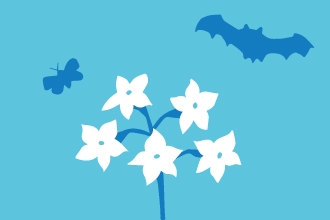Though different gardens in different locations will attract different moths, this seasonal selection includes some of the most common across Lancashire, Manchester and North Merseyside.
Common garden moths through the seasons
Brimstone moth on hydrangea by Vaughn Matthews

Blackthorn blossom by Guy Edwardes/2020VISION
Spring garden moths
When many butterflies are still holed-up in their overwintering spots or nestled snugly in their cocoons, moths are emerging to greet the sunnier days and add some much-needed colour after a gloomy winter. Here are five spring moths you’re likely to find in your garden.
Brimstone moth
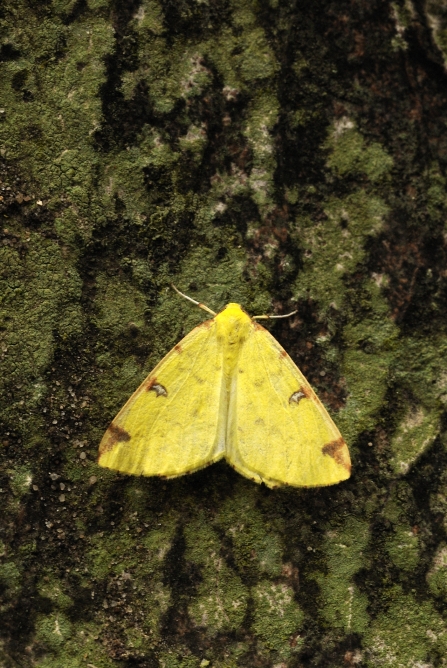
The brightly-coloured brimstone is one of the most dazzling spring moth species. Its name hints at its gorgeous sherbet yellow colouring, and it also has the most beautiful blue-white crescent on the middle-edge of each forewing. Chestnut-brown brown blotches line the edge of each forewing, too.
Hebrew character
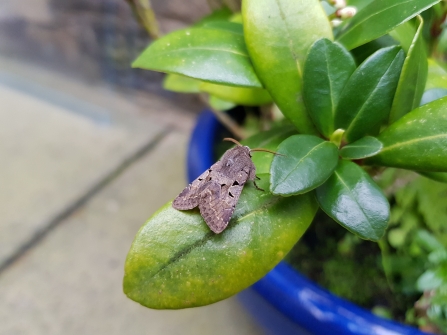
Hebrew character by Charlotte Varela
The Hebrew character is named because the black marking on each of its forewings is said to look like a character from the Hebrew alphabet. This moth’s a night flier and isn’t averse to feeding in even the chilliest weather, so if you moth trap in the first cold months of spring, you can almost certainly be sure of at least one Hebrew character to make up for an otherwise meagre haul.
Clouded border
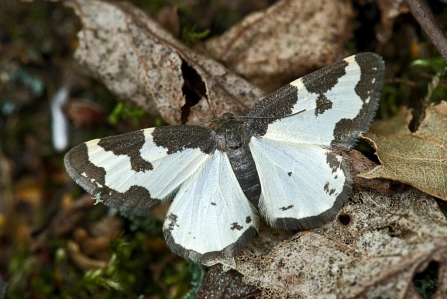
Clouded border by Les Binns
The clouded border is evidence that less can often be more – look at those gorgeous patterns. There’s no mistaking this moth with another species: it rests with its wings open so you can’t miss the black splodges on a bright white background.
Mint moth
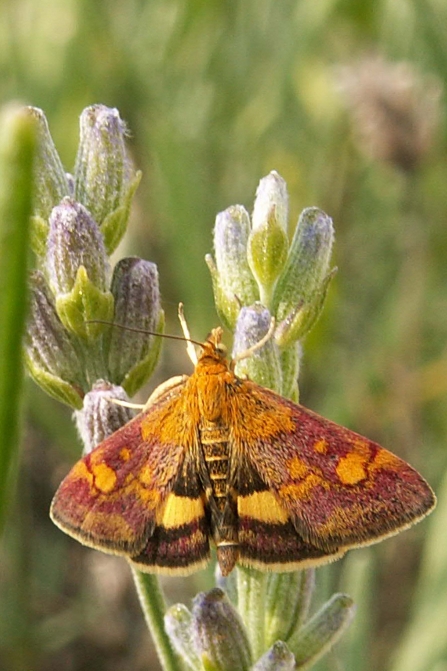
Mint moth by Margaret Holland
What a tiny piece of perfection! The mint moth isn’t green but a gorgeous mauve colour with a gold spot at the bottom of each forewing. Its underwings are black with a horizontal gold stripe, and the moth itself only has a wingspan of 18mm – 20mm. Mint moth caterpillars love munching on mint as they grow, while the adults like resting on mint plants during the day, hence this moths name.
Garden carpet
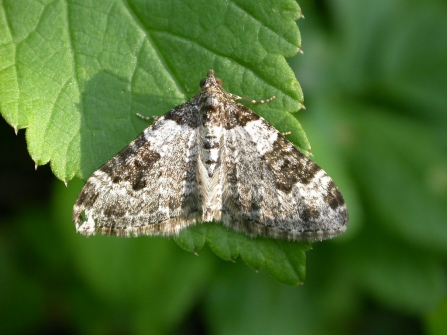
Garden carpet by Donald Hobern/Flickr.com, CC BY 2.0
A really common visitor to gardens and allotments, the garden carpet isn’t the most stand-out moth but does have some features that differentiate it from other ‘carpet’ species. Look for a wide, dark blotch that extends from the middle-edge of each forewing like a broken band with a jagged edge.
Summer garden moths
Summer is the season of giants! The warmer weather brings hawkmoths out to play, but size isn’t everything, and some of the smaller summer moths are just as beautiful as their supersized cousins.
Poplar hawkmoth
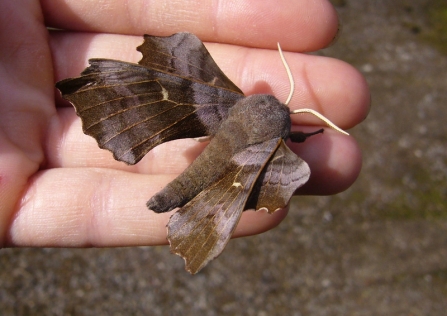
This is one of our largest and most distinctive moths. Its wings look like leaves and when it feels threatened, it flashes the most beautiful red patch on its underwings. Sometimes its normal grey colouring has a stunning purple tinge.
Poplar hawkmoths are really unusual in that their abdomen curves upwards and they rest with their wings held away from their body.
Cinnabar moth
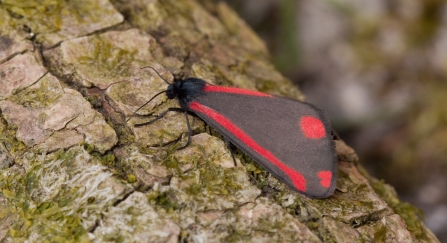
Cinnabar moth by Vaughn Matthews
This is definitely the moth of summer – a day flier seen right across Lancashire, Manchester and North Merseyside on warm, sunny days. Each shimmering black forewing is bordered by a thick raspberry-red line, and has two red blobs at the bottom. When the cinnabar moth is in flight you can’t miss its completely red underwings!
The black and orange-striped caterpillars of this moth are famous for feeding on ragwort in huge numbers.
Large yellow underwing
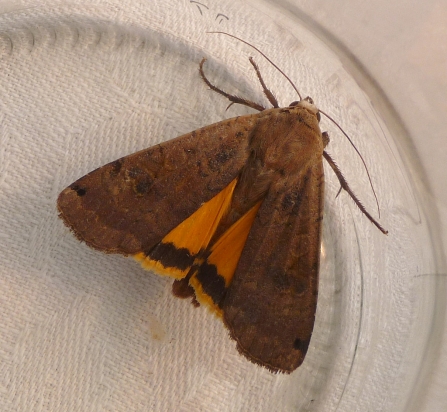
Large yellow underwing by Gail Hampshire/Flickr.com, CC BY 2.0
Large yellow underwings are so prolific during the summer months that they become the bane of many moth trappers’ lives, sometimes numbering triple figures! The bright yellow-orange of their underwings flashes beautifully when they take flight, but when they’re at rest, the best way to identify them is by the kidney shape that sits below a smaller spot. They also have a small black dot that sits right on the bottom edge of each forewing.
Burnished brass

Burnished brass by Vaughn Matthews
It isn’t hard to see where this shimmering beauty gets its name. The burnished brass looks like it’s been painted with liquid gold. It’s a great example of why you should let some patches of ‘weeds’ like nettles and thistles grow in your garden, as burnished brass caterpillars feed on nettles and spear thistles.
Elephant hawkmoth
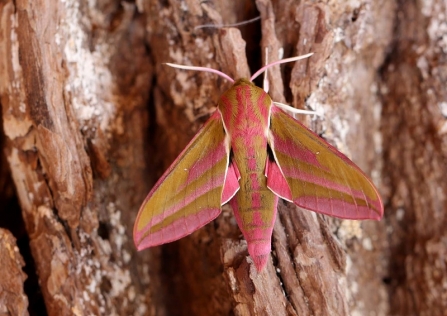
Elephant hawkmoth by Margaret Holland
Elephant hawkmoths (and their weird-looking caterpillars) are one of the most common garden moths in the UK. The caterpillars adore fuchsias and the adult moths nectar on honeysuckle, so if you have these plants in your garden there’s a good chance these rainbow-bright insects will visit.
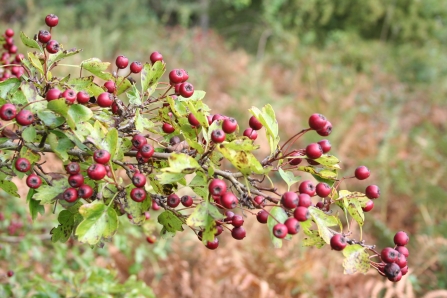
Hawthorn berries by Philip Precey
Autumn garden moths
Autumn might signal cooler days, but that doesn’t stop many of our moth species from going about their business. Autumn moths often match the colours of the falling leaves and are absolutely beautiful.
Pink-barred sallow
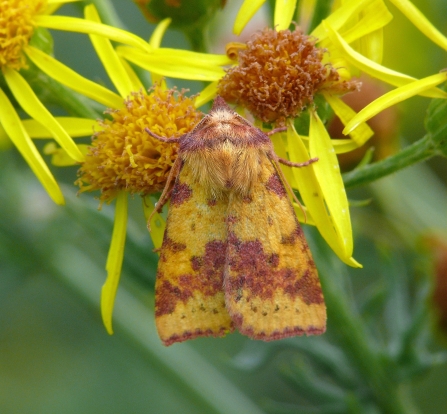
Pink-barred sallow by Patrick Clement/Flickr.com, CC BY 2.0
You’d be hard-pressed to find a more autumnal-looking moth than the pink-barred sallow. The deep red or pinkish-brown bar which crosses its mustard-yellow forewings is a key identifying feature.
Not only do these moths brave the autumn chill, but they overwinter as eggs, hatching out the following spring.
Silver Y
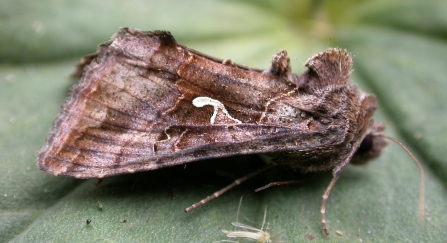
Silver Y by Philip Precey
Did you know the silver Y is actually a migratory moth that flies over from the continent? It can arrive here in huge numbers, particular during late summer and early autumn. Its wings are a gorgeous, almost marbled mixture of dark grey, silver and brown, with a distinctive Y-shaped mark in the middle.
Angle shades
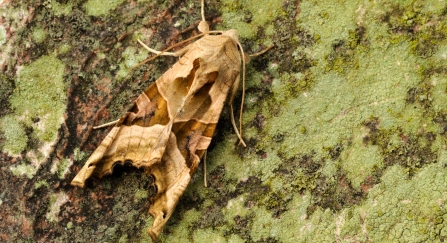
Angle shades by Amy Lewis
Is it a crispy autumn leaf? No, it’s the angle shades moth! Its crinkled-looking wings and pinkish-brown markings help to hide it from predators at the height of its flight season. They’re seen at rest quite frequently during the day, where they often sit on walls, fences or vegetation.
Canary-shouldered thorn
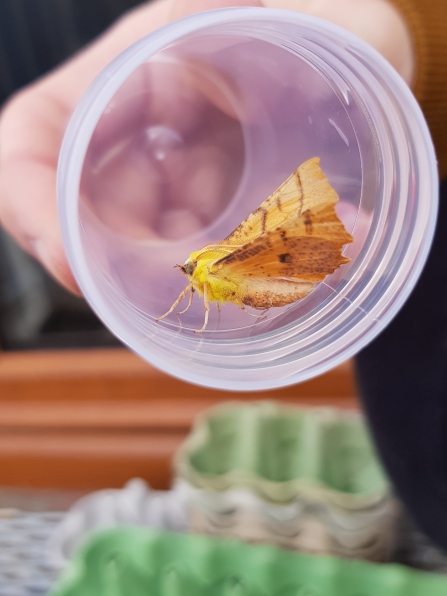
Moth or Pokémon? The canary-shouldered thorn has wings like fiery autumn leaves and is covered in bright yellow fluff. Its caterpillars prefer trees to flowers, feeding on the leaves of downy birch, silver birch, alder, limes and elms.
Herald moth
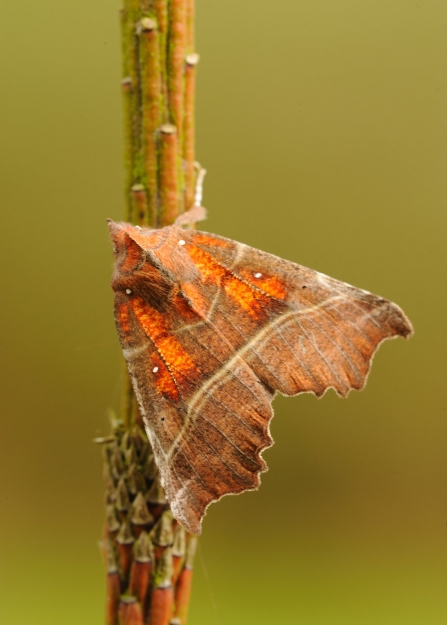
Herald moth by Amy Lewis
Unmistakeable and completely beautiful, the herald moth is an autumn staple that blends in perfectly with the falling leaves. Just look at that orange shimmer!
If you have a barn or other kind of outbuilding, keep your eyes peeled during winter as herald moths overwinter inside them.
Winter garden moths
If you were expecting a lack of moths in winter, think again! A number of hardy species stick out the cold weather to breed.
Mottled umber
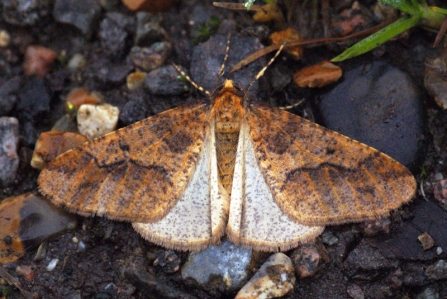
Mottled umber by Ben Sale/Flickr.com, CC BY 2.0
This is one fascinating moth – males vary from brown to orange, are covered in dark speckles and have dark bands running across their forewings. Females, on the other hand, are completely wingless! Rather than flying, they give out strong pheromones that bring amorous males straight to them.
Winter moth
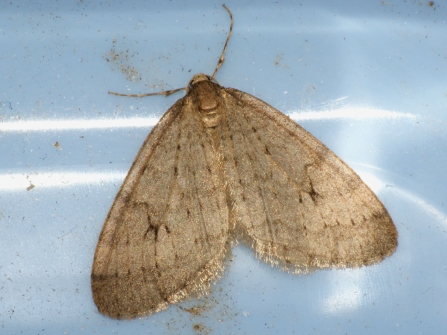
Winter moth by Ilia Ustyantsev/Flickr.com, CC BY-SA 2.0
Winter moths are pretty amazing. They can cope with freezing temperatures and are active on even the coldest days. Similar to mottled umbers, the females don’t actually have wings. Instead, they have the tiniest little winglets that render them incapable of flying.
December moth
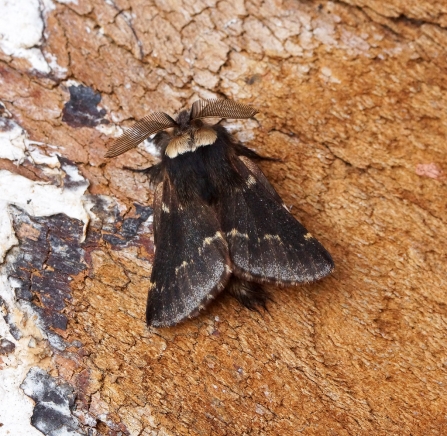
December moth by Ben Sale/Flickr.com, CC BY 2.0
Have you ever seen anything more beautiful? This striking ball of fluff is easily recognisable among winter moth species: chocolate brown with creamy white markings. Males have incredible feathery antennae and both sexes are incapable of feeding, emerging from their pupae solely to mate.
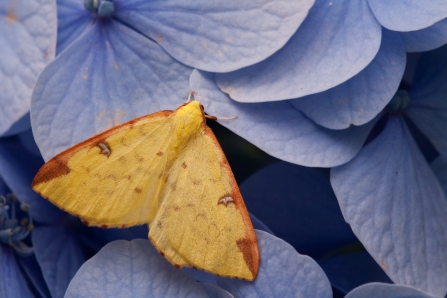
Brimstone moth on hydrangea by Vaughn Matthews
Is there a moth identification app?
The ‘What’s Flying Tonight?’ app is a great way to find out which moth species might be visiting your garden. You enter your postcode and the app pulls data from local moth records, displaying nearby species.
If you’ve seen a moth in your garden and aren’t sure what it is, load up What’s Flying Tonight? and check the listings for your postcode. You’ll almost certainly find your mystery moth amongst them.
How do I attract moths to my garden?
Garden moths love a combination of safe places to shelter and a decent buffet, so creating a moth-friendly garden is all about planting a mixture of caterpillar foodplants, nectar-rich plants and shrubs or trees. In terms of shelter, delay cutting back old plants in autumn and leave some piles of fallen leaves.
In smaller gardens, make the most of moth-friendly plants that can be grown in pots or raised beds. And no matter the size of your garden, it’s best to stop using pesticides and herbicides as these can harm moths, caterpillars and the plants on which they feed.
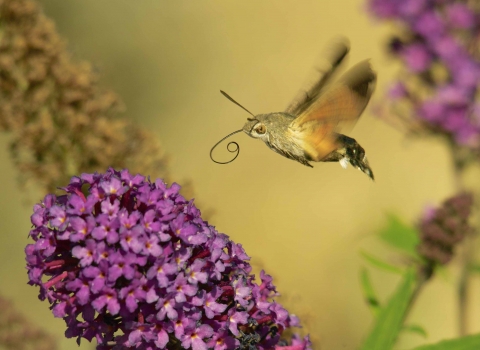
Derek Moore
Give your local moths wings!
Like in the rest of the UK, insect populations across Lancashire, Manchester and North Merseyside are declining. It would be a travesty to lose our magical moths, which is why we’re working on nature reserves and in community spaces to create natural havens for moths and other insects. Rare species like the white-spotted sable are thriving on Warton Crag, while the weird and wonderful goat moth makes its home at Freshfield Dune Heath.
You can help us continue this vital work.


